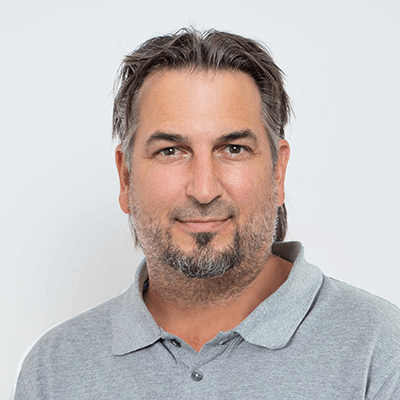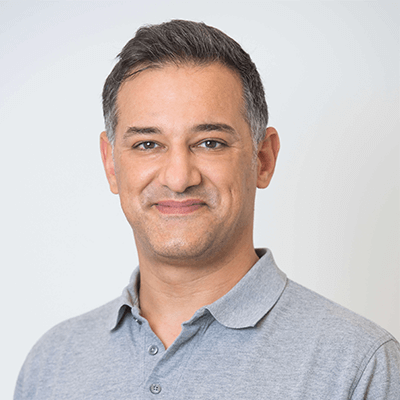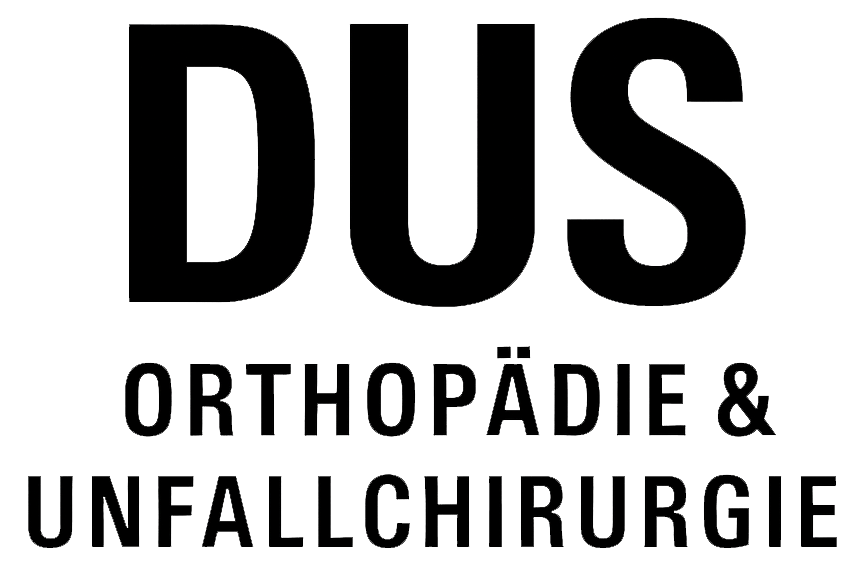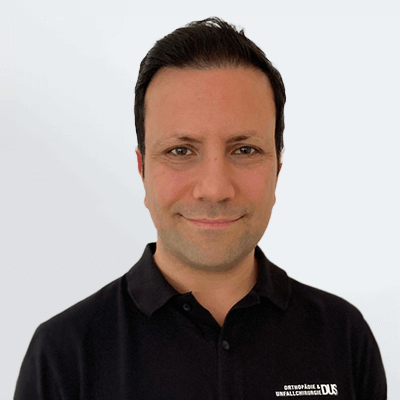PRT – periradicular therapy
Spinal therapy in Düsseldorf and the surrounding area
– Back pain relief
What exactly is PRT?
Periradicular therapy (PRT, with PRT injection) is a specialised procedure as part of an effective pain therapy for the spine. The therapy offers you, the patient, safe and successful treatment of your back pain if indicated.
The treatment is carried out with injections close to the spinal column at the respective nerve roots or at their adjacent small vertebral joints with the help of a mobile X-ray device. You do not have to be afraid of the injection: Treatment with the PRT syringe is largely painless. The therapy offers a high degree of safety through image control during treatment:
Using a mobile X-ray machine, our orthopaedic surgeons will visit the affected area and inject a medication mixture precisely under direct image control. We thus ensure that we have your spinal cord and the nerve roots of your spine in view and will treat acute, spine-related pain accurately and effectively.
PRT – periradicular therapy: treating pain in the spine
This is how PRT helps you as a pain therapy:
- PRT – how successful can periradicular therapy be? The medication injected by the PRT syringe can initially numb the area. This provides immediate relief from the pain. In addition, thanks to the decongestant and anti-inflammatory effect of the injected medication, long-term relief of your symptoms can also be achieved.
- Effective treatment at the site of the cause: Thanks to image control and the use of a millimetre-thin injection needle, the medications used are injected with pinpoint accuracy into the region of the spine to be treated, where they can quickly unfold their anti-inflammatory and decongestant effects. Acute, spine-related pain is treated immediately and effectively with PRT in this way.
- Counteracting chronic pain: Prompt, effective treatment of spine-related pain prevents so-called “pain chronification”, which is a condition in which acute pain turns into chronic pain. Chronic pain can, among other things, lead to a lengthy, multimodal therapy. PRT has a positive influence on the so-called pain memory, in which the pain is interrupted and relieved and the nerve irritation experiences relief.
High experience and safe routine in PRT
PRT- periradicular therapy: experience sets us apart
We have the necessary theoretical and practical skills and structures to offer you spinal injections (including PRT injections). Our orthopaedic surgeons have a very high level of experience and offer you safe routine periradicular therapy. We will accompany you during this therapy and will be happy to answer all your questions.
Periradicular therapy: With mobile X-ray unit in our practices for orthopaedics and trauma surgery
PRT may only be performed by doctors who have the necessary expertise and the appropriate technical equipment. Our practices offer PRT with the help of our mobile X-ray unit (image intensifier). The orthopaedist / orthopaedic surgeons in our practice have the necessary equipment support as well as the necessary qualifications. This allows you to perform X-ray-guided interventions – which includes spinal therapy – on the spine.
The advantages of PRT – periradicular therapy – spinal therapy:
- How long does it take for the PRT injection to work?: Your pain is stopped immediately thanks to the injection of medication in the affected area.
- Rapid improvement of your mobility: Pain can lead to relieving postures or movements that are unnatural for your body. Through the quick effect of PRT, you will be able to improve your physical mobility and get back to your natural movement patterns.
- Effective medication effect: The injections are used in a very targeted way. PRT has the advantage of being effective with a low dose of medication.
- Side effects are very rare: The side effects of PRT can be described as minor. We will inform you in detail about all possible side effects beforehand.
- You can bear weight again immediately: an X-ray-guided injection takes only a few minutes. After the treatment, you can quickly resume your usual daily routine.
- Outpatient in our practices: Therapy takes place on an outpatient basis in one of our practices.
- Stop taking pain tablets: Periradicular therapy has the advantage that you can largely avoid taking oral pain medication in the form of tablets. In this way, you avoid unhealthy habituation to pain-relieving medication and remain unaffected by possible side effects (e.g. stomach or kidney problems) that can result from taking tablets.
- Treat acute back pain before it becomes chronic: PRT is a safe method to avoid the so-called chronification of back pain. Chronic back pain is usually difficult to treat.

When is PRT – periradicular therapy – useful?
Periradicular therapy (PRT) is indicated for acute irritations of the small vertebral joints or the nerve roots originating from the spinal column. Often, pain can also arise in connection with a slipped disc, where the pain can also radiate into the arms or legs. This pain therapy also aims to avoid possible operations.
- Back pain
- Pain in the lumbar spine
- Pain in the thoracic spine
- Pain in the cervical spine
- “Lumbago”
- Facet blockade and symptomatic facet joint arthrosis
(in this case, isolated facet infiltration makes sense) - Herniated disc
- Sciatica – irritation of the sciatic nerve
- Irritations of the sacroiliac joints-ISG (also Sacroiliac joint-SIG or
called the sacroiliac joint) - Arthrosis of the facet joints (small vertebral joints)
- Spinal canal stenosis
- Irritation of the costotransverse joints (vertebral-rib joints)
- An alternative to injection therapy is shock wave therapy as well as acupuncture or osteopathy.
Learn more about shock wave therapy » coming soon…
How does the PRT work? – Everything you need to know about the PRT syringe:
Before pain therapy
The diagnosis – Before we start periradicular therapy, we will examine you in detail and take a close look at your symptoms. We will determine where exactly your back pain is coming from and make a definite diagnosis.
Clarification – Of course, you will receive all the important information about the PRT injection or near-spinal injection in advance. We will discuss the procedure with you and arrange the appointments for your treatment.
The pain therapy
Treatment procedure – Our doctors will welcome you to one of our practices in Düsseldorf or the surrounding area and see you for PRT at the agreed time. You as the patient will first be placed on your stomach on our injection table. We will visit the respective area of the spine, also called segment, with a mobile X-ray machine. This way we can determine the direction and the depth of insertion of the needle.
Don’t be afraid of the injection with the PRT syringe – the treatment is largely painless for you: After appropriate disinfection of the skin, a wafer-thin needle is inserted into the affected region under X-ray control. The previously selected medication is injected precisely and the needle is removed afterwards. A sterile plaster is applied to the injection site.
The medicines reach the cause of the pain directly – The right medicine for you is always individually adapted to you and your symptoms. The medication is injected where the cause of the pain is located with the help of PRT. Dadurch wird auch nur eine geringe Gesamtdosis der Medikamente erforderlich sein.
How often is PRT used? – Depending on the symptoms, you will receive a suitable therapy plan from us. The injections are usually given over a period of one to two weeks and can be repeated several times if necessary.
Attendant – When a PRT injection is given, numbness usually occurs in the affected limb. Due to the resulting risk of falling, we will ask you to have an escort take you home and also care for you there.

After pain therapy
Resilience – In principle, you are fully resilient after an injection has been performed on the spine. However, you should take it easy for the first four to six hours after the PRT injection or near-spinal injection due to possible numbness, which usually occurs. The plaster can be removed the following day – then you may also shower again.
Short-term numbness possible – After our treatment, there is in principle the possibility of a short-term numbness or even muscle weakness of the corresponding extremity. You do not need to be afraid. In case of temporary numbness, this will disappear independently and also completely.
Ability to work – For the duration of the injection therapy, they are fully able to work and do not have to stay at home. However, you should consider physical rest during the entire therapy period (e.g. avoid lifting and carrying objects weighing more than five kilograms).
Possible side effects
Side effects are very rare. The most common is persistent numbness of the affected and also treated limb for several days and allergic reactions to the drugs used.
A frequent reaction to the cortisone that may be injected is a so-called flush symptomatology, which is accompanied by a reddening of the face. Sometimes the sugar can derail in diabetics as well as the blood pressure – but this condition usually lasts only 5-7 days.
It is crucial that the local pain relief lasts for a long time. In the case of extreme reactions, the possibility of gentle chemical-free autologous blood therapy would be given as an alternative to the cortisone mixture. There are very rare described necroses of the local tissue.
Injections near the spine for therapy – our services at a glance:
Our doctors offer you various treatment options if indicated:
Therapy of the facet joints (injection at the small vertebral joints)
Nerve root blocks (injection to a single inflamed nerve root)
Epidural flooding (injection of medication into the spinal canal)
Injections at the costotransverse joints: (Injection at vertebral-rib joints)
Injections at the sacroiliac joints-ISG (sacroiliac joint-SIG, sacroiliac joints)
Our expertise for PRT – Periradicular Therapy – Spinal Therapy
Our doctors are specialists in orthopaedics and trauma surgery and specialise, among other things, in conservative therapy of the spine with X-ray-guided injections:



LOCATION
Location Düsseldorf-Stockum
Orthopaedist Düsseldorf: Dr. med. Leonid Blüm
Location Düsseldorf-Grafenberg
Orthopaedist Düsseldorf: Panagiotis Karachalios, Dr. Leonid Blüm, Gökhan Dogan
Location Düsseldorf-Oberkassel Heerdt
Orthopaedist Düsseldorf: Alain Dalemans, Turan Ocak and Christopher Arnold





